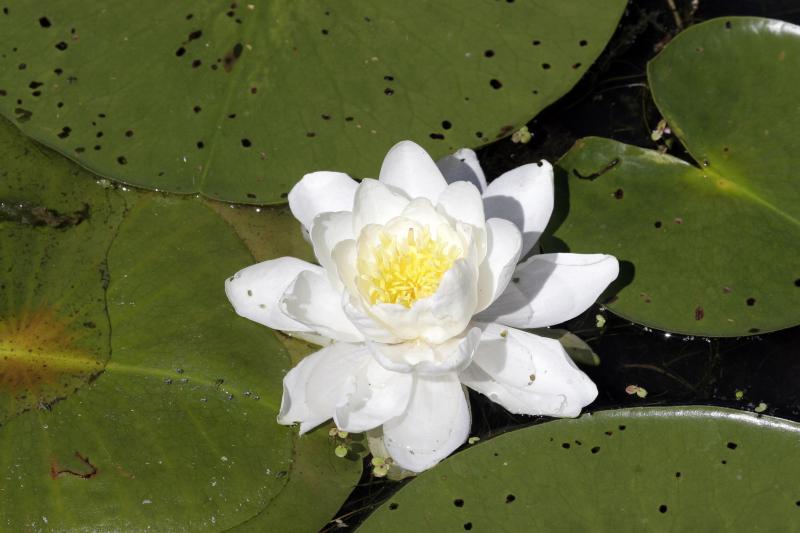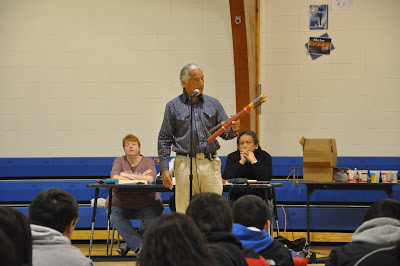US Indian Scouts were an official branch of the US Military from 1865 to about 1950. Indian Scouts also had their own guidons, military flags.
The Spy And
The Wolf
Tunwéya Na Šuŋgmánitu Tĥáŋka
By Dakota
Wind
GREAT
PLAINS – There were two kinds of scouts on the Great
Plains in the nineteenth century. One kind consisted of Indians
who enlisted in the US
military as members of the US Scouts, an official branch of the US US
The other
kind of scout served the native people by going out ahead of the main camp and
watching for enemies, guiding the camp to the best campsites, and searched for
game. The essential qualifications of the scout included truthfulness, courage,
intuition, and a thorough knowledge of the landscape.
Native men
who enlisted as US Scouts did so for a variety of reasons. Some enlisted as a
means to avenge themselves on an enemy tribe, but others did so out of the
desperate need to feed their families.
"The Buffalo Hunt Under The Wolf Skin Mask" by American artist George Catlin. Indian scouts sometimes employed the wolf skin as a means to sneak up on game or enemies.
Native men,
so far as Lakĥóta men are concerned,
were selected by council and gathered by the headmen for council. At the
council, they would pray, smoke, and talk about the importance of the occasion.
The chief and council spoke about the benefits for the entire camp upon
success, and dire consequence upon defeat. The scouts were told to be wise as
well as brave, to look not only to the front but behind, up as well much as to
the ground, to watch for movement among the animals, to listen to the wind, to
be mindful when crossing streams, to not disturb any animals, and to swiftly return
to the people with any information.
Lakĥóta scouts, weren’t selected for
their fighting prowess, nor were they necessarily warriors. The scout party was
selected for each man’s keen eyesight and a man’s reputation for shrewd cunning
and quick vigilance.
The Lakĥóta have sayings for mindfulness or
awareness. In an online discourse with Vaughn T. Three Legs, Iŋyáŋ Hokšíla (Stone Boy), enrolled
member of the Standing Rock Sioux Tribe and radio personality on KLND 89.5 FM, and
his čhiyé (older brother) Chuck
Benson, they shared the phrase Ablésya máni
yo, which means, “Be observant as you go,” but observation also implies
understanding.
"Comanche War Party, Chief Discovering Enemy And Urging His Men At Sunrise" by George Catlin, 1834. Note: the chief meets the two scouts at the crest of the hill.
Cedric
Goodhouse, a respected elder and enrolled member of the Standing Rock Sioux
Tribe, offered Ĥa kíta máni yo, which
means, “Observe everything as you go.” He also put before this writer the
phrase Awáŋglake ománi, or “Watch
yourself as you go around.” Lastly, Cedric shared the philosophy Taŋyáŋ wíyukčaŋ ománi, “Think good
things as you go around.”
The late Albert
White Hat, a respected elder, teacher, and enrolled member of the Rosebud Sioux
Tribe, often shared the phrase Naké nulá
waúŋ, “Always prepared,” or “Prepared for anything,” but this preparedness
also reflects a readiness in spirit to meet the Creator too.
Each of these sayings were things practiced daily in camp and on the trail, then and today.
Before
starting out, the scout’s relatives, or the camp’s medicine people offer
prayers of protection, for the sun and moon to light the way, for the rain to
fall sparingly, for the rivers and streams to offer safe passage, for the
bluffs to offer unimpeded views, and for gentle winds. All of nature is
petitioned to assist the scout to the people’s benefit.
When the
scouts set out, only two were permitted to go in the same direction. A larger
scout party could see and report no more information than two. A larger party
would certainly be discovered more easily by the enemy.
The scout,
whether he was a US Indian Scout or a Lakĥóta
scout, would take with him a small mirror or field glass, invaluable tools made
available in the early fur trade days. A scout would signal with his mirror a
pre-determined set of flashes for the main camp to interpret and prepare long
before his return. A tremulous series of flashes might indicate that the enemy
was seen.
An online search for "mirror," "bag," and "Sioux," brought this image up. This type of mirror bag could easily be modified to be worn around the neck.
As the scout
approached the main camp, near enough for vocal communication, he might let
loose a wolf howl, again, to indicate that the enemy was seen and/or
approaching.
Upon viewing
the flashes and certainly upon hearing the wolf howl, the main camp war chief,
headmen, and warriors would gather in a circle broken by an opening towards the
approaching scout. The scout or scouts entered the broken circle and completed
it, where they shared the news.
Captain
William Philo Clark, a graduate of the US Military School, and military scout
under General Crook, observed firsthand or heard from native authorities of a
ceremonial ritual upon the scout or scouts return. Clark served in Dakota Territory from 1868 to 1884, and authored “The
Indian Sign Language.” Clark observed that all
tribes observed a return ritual for their scouts.
Basically,
the broken circle is complete when the scout or scouts enter the opening,
whereupon the pipe is offered to the six directions, the war chief or other
headman and scout draw breath on the pipe, and upon the fourth time, the scout
or scouts are debriefed. It was Clark ’s observation
that often enough the ritual was not always practiced. Certainly if there were
an enemy war party fast approaching, ceremony was dropped in preparation for
combat.
The Lakĥóta word for scout is Tuŋwéya, which means “Spy,” “Guide,” or “Scout.”
The sign for scout is simply “Wolf.” Hold the right hand, palm out, near right
shoulder, first and second fingers extended, separated and pointing upwards; remaining
fingers and thumb closed; move right hand several inches to front and slightly
upwards, turning hand a little so that extended fingers point to front and
upward.
The Lakĥóta scout sometimes employed a wolf
headdress to aid in his mission; sometimes they even carried a bone whistle to
aid in alerting the camp.
In English,
the word spy implies a clandestine secrecy; a guide leads people in unfamiliar
territory, and a scout might mean learning basic survival skills or a covert
military reconnaissance. For the Lakĥóta,
tuŋwéya clearly meant spying and reconnoitering
for the camp; they already know their own country and all except the smallest certainly
knew basic survival skills, however they definitely needed to know who else
traveled in their territory.



















.jpg)





